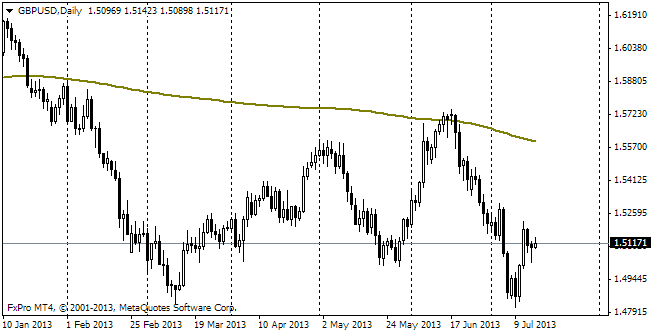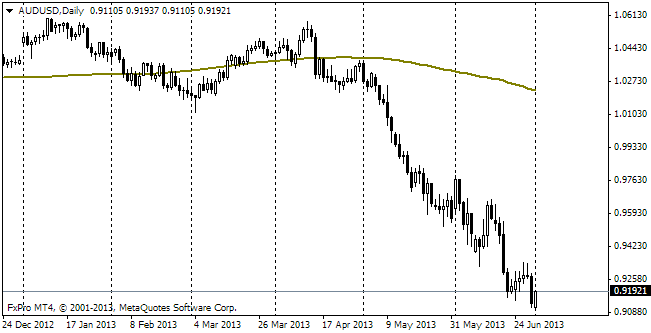EUR/usd
USD gave all Friday's gains back to the single currency. Against other currencies it felt a bit more confident, staying positive. The main reason for that, in our opinion, is strong positioning for growth of the US currency. The rows of its buyers are too dense, so simply there can be no more volunteers to buy again. This very lack of heavy buyers serves as driving force for the currencies, otherwise the movement would be opposite. We mentioned it before and expected that it would happen on the ECB's rate decision or on the employment statistics. However, it didn't happen and investors were closing long positions in USD for no obvious reason yesterday. As a result, on Monday almost without news the difference between the daily low and high of eurusd made about 170pips. The bulls were just shy of the bullish engulfing, a figure, which would signal a reversal for growth. If it happened, the technical picture would contradict the fundamental one, where the US growth is accompanied by the impressive employment dynamics and reduction of the trade deficit, while the ECB is intensively easing the monetary policy, doing its best to turn the euro into a funding currency rather than an asset. Since there are no important macroeconomic news scheduled in the USA and EU for today, it is quite possible that the pair will continue drifting between 1.2500 and 1.2670. As now we are closer to the upper bound (1.2615), most likely, the downtrend will resume. Despite the strength, which USD demonstrated last week, we'd recommend to be cautious with the stakes for its further growth without pullbacks. Though the economy is growing, it is up to the Fed whether to raise the rate or not. Probably, the meeting minutes will be more peaceful than expected by the market, which will provoke the beginning of correction.
GBP/USD
Following the euro the pound has also caught the mood for adjustment. But the currency wasn't so oversold before, so it hasn't grown as much as the single currency. The cable failed to reach even 1.61. Now the pair is again moving down. The release of industrial production statistics will probably help it kill all attempts of recovery. It is expected that the index will grow by 0.2% and that the annual rate will accelerate to 2.6% from 1.7% a month ago. These data may produce significant influence on the GDP forecasts, thus affecting the exchange rate of the British currency.

USD/JPY
Weakness of the domestic currency can hardly resolve all economic problems of Japan – such an opinion can be heard more and more often among politicians of the Land of the Rising Sun and even among businessmen, who have to pay more for commodity and energy import. We see that the economic growth of the country lags much behind the initial rates, which arouses expectations of further quantitative easing by the BOJ. But we shouldn't forget that together with the decrease in the rate of the national currency, the purchasing power of the Japanese also declines. And this already means a drop in their living standards, which will hardly be to anybody's liking. It seems that exactly for this reason the BOJ doesn't hurry with new incentives, especially against the sharp depreciation of the currency in September.

AUD/USD
The reserved comments of the RBA after the meeting didn't produce any significant effect on the Australian currency. They hint that the rates will remain unchanged in the near future, but it is also pointed out that the exchange rates and commodity prices are still high against the historic standards. So now market participants will switch their attention to the Australian economic data, both direct (employment, demand) and indirect (China, commodity prices).
